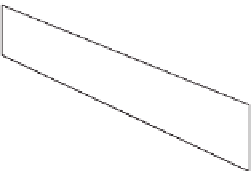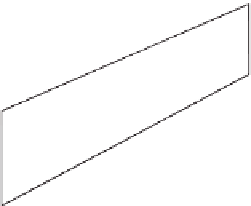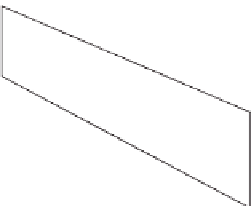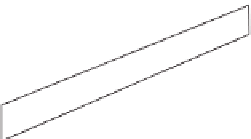Environmental Engineering Reference
In-Depth Information
Organic semiconductors are available in addition to elementary semiconductors, such as
silicon (Si), and compound semiconductors, such as gallium arsenide (GaAs), Cadmium
telluride (CdTe) and copper indium diselenide (CuInSe
2
). All these materials are used
in photovoltaics.
The tilt in our simple model is important because it enables the cycle to function
perfectly. Otherwise the water will not collect on its own in the rain gutter. With
semiconductors the second level must also have an incline that enables the electrons
to gather on one side. In contrast to our simple model, it is not gravity that is used
to collect the electrons but instead an electric fi eld, which pulls the negatively
charged electrons to one side. In order to produce this fi eld, a semiconductor must
be 'doped'. One side of the semiconductor is deliberately contaminated with an
element like boron and the other side with a different element like phosphorus. As
boron and phosphorus also have a varying number of electrons, they produce the
necessary incline. The crossing area is called a space-charge region. An electric fi eld
is created here, which pulls the electrons to one side. There external contacts collect
them and they fl ow back to the fi rst level through an external electric circuit. In the
process they produce electrical energy.
Figure 5.2 shows the principal structure of a silicon solar cell. In technical jargon
the different doped sides of the silicon wafer are called n-doped and p-doped silicon,
respectively. Between the two areas is a barrier layer with the space-charge region.
Light in the form of photons separates negatively charged particles (electrons) and
positively charged particles (holes) and ensures that the electrons are able to move
about freely at the second level. In contrast to the simple model shown, the holes
also move. The electrons and holes are separated by the space-charge region. Thin
front contacts collect the electrons on the front side of the cell.
solar radiation (photons)
front contact
consumer
n-doped
silicon
electron
hole
-
-
-
+
-
+
+
-
boundary layer
p-doped
silicon
back contact
Figure 5.2
Structure and processes of a solar cell
(Quaschning, 2007).









































































